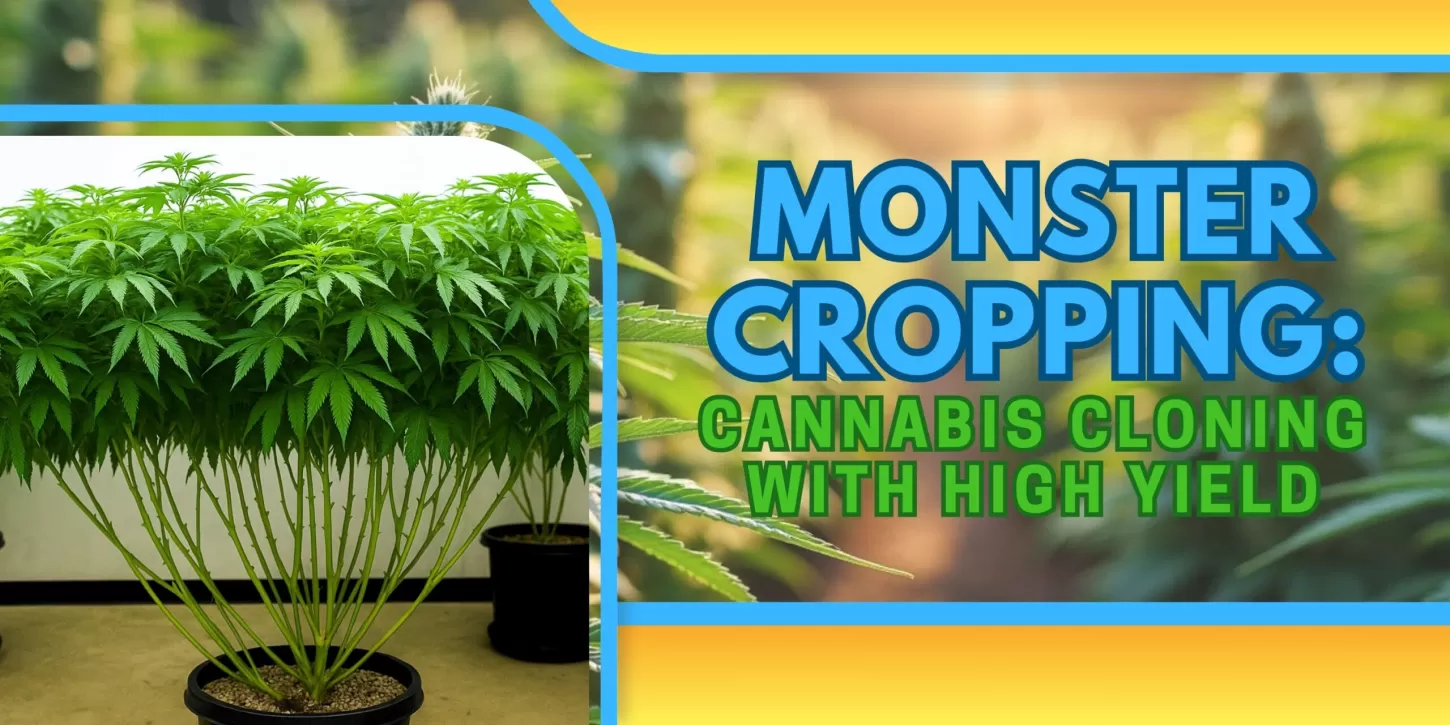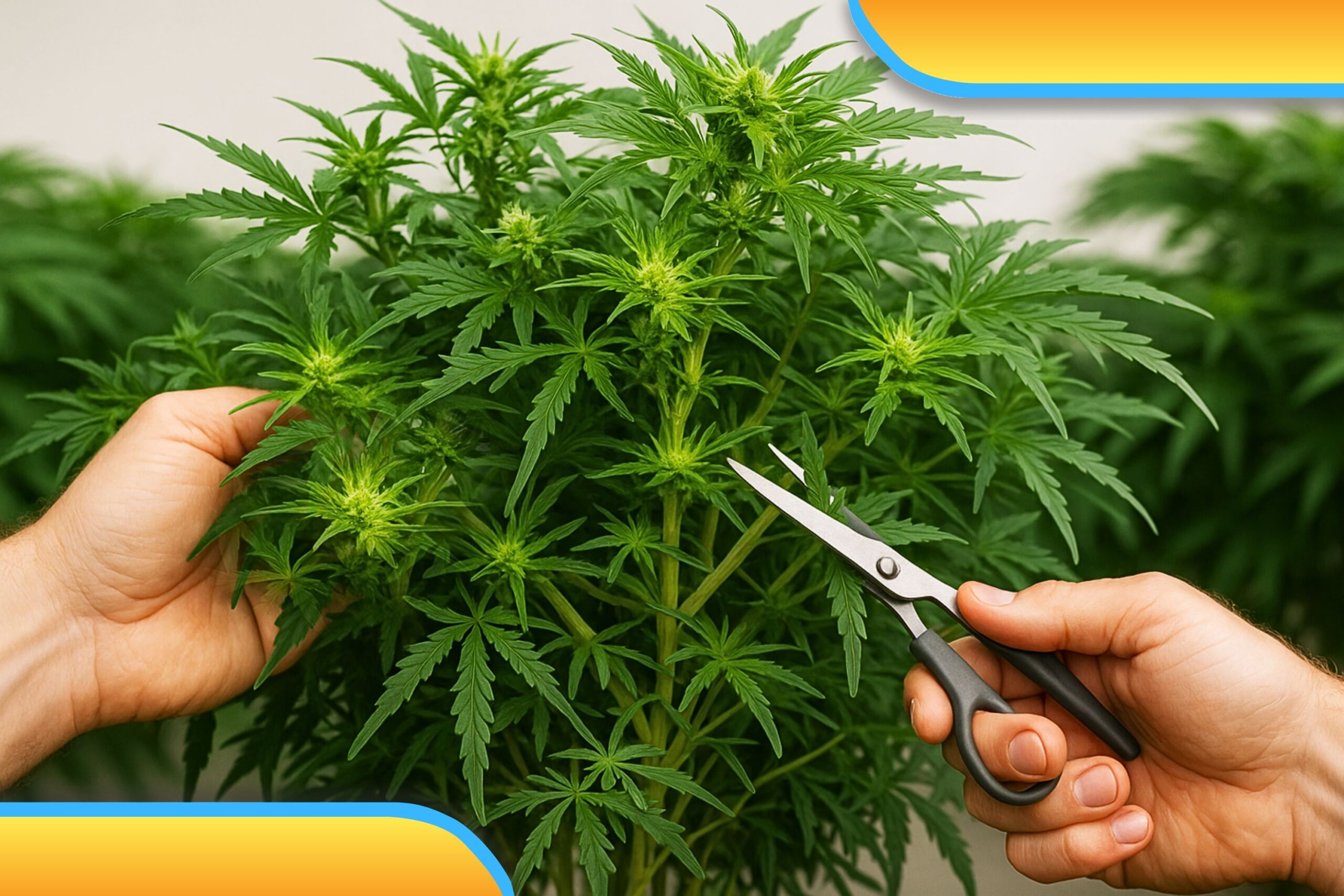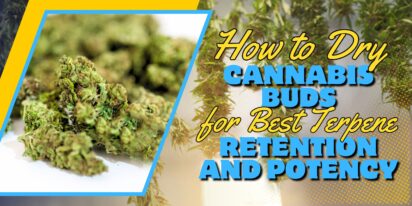Are You 21 Or Over?
YesOr
No By clicking yes, you certify that you are over 21 years old. By using this website, you agree to our legal disclaimer.Table of Contents

By harvesting clones from flowering plants, monster cropping—a potent method of growing cannabis—helps producers boost output. Unlike conventional veg plant cloning, monster cropping produces busier plants with several colas, perfect for widening the canopy area and promoting light penetration. Perfect execution and timing of this innovative approach will help to significantly boost bud yield in both indoor and outdoor plants.

Usually, two to three weeks into bloom, monster cropping is cutting from a cannabis plant that has started the blooming cycle. Once rooted and resumed vegetative development, these monster clones have aberrant but highly desired features, including multiple growing points, short internodes, and strong lateral branching. Usually, to maximize yields, monster cropping is combined with other training techniques, including low-stress or ScrOG.
Reversing a flowering clone into veg starts an endocrine imbalance that results in a “Monster” development pattern. Unlike conventional vegetative clones, these plants spread, thicken, and grow more tops. Though it sounds counterintuitive, the operation disturbs the plant’s preceding flowering cues, which drives it into over-production.

From the second week to the third week of blooming, when the plant has only started to create bud sites and not yet significant resin generation, is the ideal period for creating monster crop clones. While late cloning can produce clones that never root or very slowly, early cloning can produce normal vegetative traits.
Using sterilized tools and exercising great care while making any cut helps to prevent damage or contamination of the tissue. Lower portions are probably more successful, as such areas have slower flowering development and more chances of reversing successfully. An easier transition is favored from a sterile, stress-free environment, so this technique reduces stress for the clone and maximizes the success rates.
Cuttings go through a period of hormonal uncertainty following removal before returning to vegetative development. This will take two to three weeks and patience. Over this period, the development will not be uniform. A good feature of reveg is that leaves can grow single blades, twisted forms, or curled edges.
Revegetation is a sensitive window requiring regular observation and maximal care. Nutrient schedules may have to be changed to lower phosphorus and potassium yet raise nitrogen levels. Root spacing stimulation and mild foliar sprays may be included to encourage active growth. Growers can start formative pruning of the plant for even canopy development in preparation for flowering once fresh growth starts to stabilize.
The monster cropping system has several distinct characteristics, making it attractive to novices and expert farmers alike:
1. No Mother Plant Needed
Year-round harvest is made possible by monster cropping without the need to preserve mother plants. Growers can save space and resources by harvesting clones in bloom and reusing them in the next cycles.
Small grow operations with limited space and electrical capacity benefit particularly from this versatility. Eliminating the requirement for specific vegetative rooms for mother plants allows farmers to allocate those resources to flowering regions, therefore increasing the general efficiency.
2. Improved Prospective Yield
Bushy habit generates additional sites and colas. Supported with ScrOG or LST, these clones flourish even under a level canopy, thereby optimizing light and air movement.
Its structural density finds its direct path into improved square meter productivity. Particularly when combined with strong genes and dial-in environmental conditions, increased colas result in higher flower weight potential. Compared to traditionally trained plants, most growers find yields to rise between 10 and 30%.
3. Conservation of Genetic Features
Because monster cropping is done using clones, all of the genetic features of the parent blooming plant are maintained. This guarantees general plant performance, homogeneity of terpene content, and amounts of cannabinoids.
For both commercial and home growers, especially when dealing with valuable or scarce phenotypes, this conservation of traits becomes very vital. By cloning from flowers, farmers can continue propagating elite lines without having to reset the genetic clock or phenohunt new seed.
4. Stress Resistance
Because they have previously suffered the strain of cycling through blooming and vegetative, monster-cropped plants often show more resilience. This “training” produces more robust plants able to resist minor stress.
For more demanding training and maybe more resilience against changing environmental conditions, their toughened physiology helps these clones greatly. This trait especially helps indoor producers perfecting high-end grow systems or outdoor growers experiencing fluctuating weather.
To naturally root the clones, also use a cloning medium including humic acids or seaweed extract. Two times a day, check your clones to make sure fungal problems and wilting are spotted and taken care of early on. Successful clones and failing clones differ in minor details that count.
Although monster cropping may make almost any photoperiod strain useful, some respond better than others. While sativa-hybrid plants react nicely to greater lateral branching, Indica-hybrid plants will react with more dense growth.
Good possibilities are also cheese, Critical Mass, and OG Kush; each of these has a robust cloning history and responds well to stress-induced training. Plants exhibiting hybrid vigor have the highest “monster” traits when reverting from flower to veg.
Applying a layered training method helps you better describe the architecture of your plant. In thick canopies, this not only maximizes light use efficiency but also simplifies humidity control and pest risk management. The end effect is a neat, efficient plant structure that thrives even in artificial light.
Because autoflowering strains lack photoperiod sensitivity to make this technique practical, monster cropping does not apply to them. It’s best left for indoor growers or those working in regulated surroundings. For producers who wish to maximize yields and have more control of the canopy, the benefits are well worth the expenditure, even if the technique increases complexity and time to the growing cycle.
Growers should also take into account additional time spent during the revegging stage, which may extend the whole life cycle of a plant by weeks. Usually, though, better plant structure and increased floral production balance this extra time. Monster cropping is a skill well worth learning for those looking for a sustainable, repeatable, high-output strategy.
Monster cropping is an extraordinarily efficient cloning technology that harnesses the unique hormonal state of flowering crops to make unusually powerful clones. When used in line with a well-designed training schedule, it can possibly provide amazing yields from rather limited numbers of plants. The technique helps producers to maximize the output and strength of their cannabis plants by exact timing, procedure, and management of the environment.
It’s not only the aggregation of larger harvests—this technique is all about developing an eco-friendly cycle of recycling top-of-the-line genetics while continually enhancing canopy health and bud quality. As the craft of cultivating cannabis is ever-evolving, monster cropping remains a timeless and visionary method for farmers seeking efficiency, potency, and precision in every grow cycle.

Curious about growing weed in a healthy, effective way? Welcome to the realm of weed hydro! This method uses water instead of soil, delivering n

Peyote Zkittlez is a unique cannabis strain that has quickly gained dedicated followers among enthusiasts and patients alike. Its parentage—Zk

As growers, we want strains that work well, are strong, and are of good quality. Autoflowering cannabis strains are a big step forward for both

Pot growers always ask the same basic question: How much weed does a weed plant produce? The answer is complex and depends on a multitude of var

Ever had the room spin after a few hits? You're not alone. Figuring out how to prevent getting dizzy high can make your cannabis experience a wh

Drying cannabis properly is a critical process in preserving the plant's full aroma and flavor and its psychoactive abilities. Tampering with th

Ever caught yourself a bit too high and all of a sudden in need of being normal? Whether you're heading out for munchies or bumping into someone

Looking for sage advice on how not to get pinched with weed without batting an eye? Attempting to protect your stash from gossipy roommates, sno

Nutrient lockout, also known as nutrient binding or chemical antagonism, is a significant issue in cannabis cultivation that negatively impacts

Germination is the most critical initial stage in growing healthy, high-quality cannabis plants. During germination, the dormant seed becomes a
Are You 21 Or Over?
YesOr
No By clicking yes, you certify that you are over 21 years old. By using this website, you agree to our legal disclaimer.
Excellent blog here Also your website loads up very fast What web host are you using Can I get your affiliate link to your host I wish my web site loaded up as quickly as yours lol
Your writing is not only informative but also incredibly inspiring. You have a knack for sparking curiosity and encouraging critical thinking. Thank you for being such a positive influence!
Simply wish to say your article is as amazing The clearness in your post is just nice and i could assume youre an expert on this subject Well with your permission let me to grab your feed to keep updated with forthcoming post Thanks a million and please carry on the gratifying work
Somebody essentially lend a hand to make significantly articles Id state That is the very first time I frequented your website page and up to now I surprised with the research you made to make this actual submit amazing Wonderful task
Your blog is a beacon of light in the often murky waters of online content. Your thoughtful analysis and insightful commentary never fail to leave a lasting impression. Keep up the amazing work!
Thank you for the auspicious writeup It in fact was a amusement account it Look advanced to more added agreeable from you By the way how could we communicate
Your blog is a constant source of inspiration for me. Your passion for your subject matter shines through in every post, and it’s clear that you genuinely care about making a positive impact on your readers.
Your blog is a constant source of inspiration for me. Your passion for your subject matter is palpable, and it’s clear that you pour your heart and soul into every post. Keep up the incredible work!
Your articles never fail to captivate me. Each one is a testament to your expertise and dedication to your craft. Thank you for sharing your wisdom with the world.
Your blog is a testament to your dedication to your craft. Your commitment to excellence is evident in every aspect of your writing. Thank you for being such a positive influence in the online community.
Your writing has a way of resonating with me on a deep level. I appreciate the honesty and authenticity you bring to every post. Thank you for sharing your journey with us.
Your blog is a true gem in the world of online content. I’m continually impressed by the depth of your research and the clarity of your writing. Thank you for sharing your wisdom with us.
Hi i think that i saw you visited my web site thus i came to Return the favore Im attempting to find things to enhance my siteI suppose its ok to use a few of your ideas
Somebody essentially help to make significantly articles Id state This is the first time I frequented your web page and up to now I surprised with the research you made to make this actual post incredible Fantastic job
Usually I do not read article on blogs however I would like to say that this writeup very compelled me to take a look at and do so Your writing taste has been amazed me Thanks quite nice post
Your blog has quickly become one of my favorites. Your writing is both insightful and thought-provoking, and I always come away from your posts feeling inspired. Keep up the phenomenal work!
Every time I visit your website, I’m greeted with thought-provoking content and impeccable writing. You truly have a gift for articulating complex ideas in a clear and engaging manner.
Hey there You have done a fantastic job I will certainly digg it and personally recommend to my friends Im confident theyll be benefited from this site
I have read some excellent stuff here Definitely value bookmarking for revisiting I wonder how much effort you put to make the sort of excellent informative website
Nice blog here Also your site loads up very fast What host are you using Can I get your affiliate link to your host I wish my site loaded up as quickly as yours lol
What i do not understood is in truth how you are not actually a lot more smartlyliked than you may be now You are very intelligent You realize therefore significantly in the case of this topic produced me individually imagine it from numerous numerous angles Its like men and women dont seem to be fascinated until it is one thing to do with Woman gaga Your own stuffs nice All the time care for it up
Your blog is a beacon of light in the often murky waters of online content. Your thoughtful analysis and insightful commentary never fail to leave a lasting impression. Keep up the amazing work!
Your blog is a breath of fresh air in the often stagnant world of online content. Your thoughtful analysis and insightful commentary never fail to leave a lasting impression. Thank you for sharing your wisdom with us.
Your blog is a beacon of light in the often murky waters of online content. Your thoughtful analysis and insightful commentary never fail to leave a lasting impression. Keep up the amazing work!
Usually I do not read article on blogs however I would like to say that this writeup very compelled me to take a look at and do it Your writing style has been amazed me Thank you very nice article
Your writing has a way of resonating with me on a deep level. I appreciate the honesty and authenticity you bring to every post. Thank you for sharing your journey with us.
This hydroponics guide is quite the buzz, seriously! Who knew growing weed without dirt could be so complicated yet potentially rewarding? The breakdown of systems like DWC and NFT is helpful, though I suspect my cat might confuse the air pump for a toy. The idea of cleaner buds is tempting, especially since explaining hydro weed to my non-growing friends might get messy. And the bit about potential dizziness from hydro weed? Perfect, now I have an excuse for why I always stumble a bit after a grow session. Still, the promise of faster grows and higher yields is hard to ignore, even if it means more trips to the pH meter than to the coffee shop. Overall, a cultivating read for the curious grower!